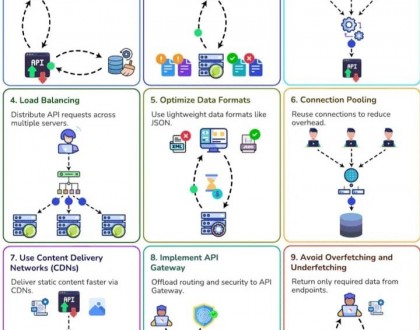Securing ASP.NET Web APIs with API Keys and Role-Based Authentication

Security is a crucial aspect of any ASP.NET Core Web API. In this guide, I will cover how to:
Secure an API using API Keys (custom auth model)
Implement Role-Based Authentication with JWT Tokens
Why Secure Your API?
APIs are often exposed to the internet, making them vulnerable to unauthorized access. By securing them with API Keys and Role-Based Authentication, we can:
. Restrict access to authorized clients
. Control user permissions based on their roles
. Protect sensitive data
Part 1: Securing API with API Keys
What is an API Key?
An API Key is a unique identifier used to authenticate requests from clients. Unlike JWT tokens, API keys are static and usually provided as a header or query parameter.
Implementing API Key Authentication in ASP.NET Core
Step 1: Create a Middleware for API Key Validation
Create a middleware to check for a valid API key. For this lets create a new class ApiKeyMiddleware.cs
using Microsoft.AspNetCore.Http;
using Microsoft.Extensions.Configuration;
using System.Threading.Tasks;
public class ApiKeyMiddleware
{
private readonly RequestDelegate _next;
private const string API_KEY_HEADER = "X-API-KEY";
private readonly string _apiKey;
public ApiKeyMiddleware(RequestDelegate next, IConfiguration configuration)
{
_next = next;
_apiKey = configuration["ApiKey"]; // Load API key from appsettings.json
}
public async Task Invoke(HttpContext context)
{
if (!context.Request.Headers.TryGetValue(API_KEY_HEADER, out var extractedApiKey) || extractedApiKey != _apiKey)
{
context.Response.StatusCode = 401; // Unauthorized
await context.Response.WriteAsync("Unauthorized: Invalid API Key");
return;
}
await _next(context); // Continue request pipeline if key is valid
}
}
Step 2: Register the Middleware in Program.cs
Modify your Program.cs to use the middleware.
app.UseMiddleware();
Step 3: Store the API Key Securely in appsettings.json
{
"ApiKey": "MySuperSecretAPIKey"
}Step 4: Send API Key in Requests
Your API now requires the API key in the header. If the key is missing or invalid, the API will return 401 Unauthorized.
Part 2: Implement Role-Based Authentication with JWT
Now, let’s implement JWT Authentication and Role-Based Access Control (RBAC).
Before that if you are interested, please read my blog here about the JWT
2.1 Install Required Packages
Run the following NuGet commands:
dotnet add package Microsoft.AspNetCore.Authentication.JwtBearer
dotnet add package Microsoft.AspNetCore.Identity
dotnet add package Microsoft.AspNetCore.Identity.EntityFrameworkCore
2.2 Configure Authentication in Program.cs
Modify your Program.cs file to enable JWT authentication.
using Microsoft.AspNetCore.Authentication.JwtBearer;
using Microsoft.IdentityModel.Tokens;
using System.Text;
var builder = WebApplication.CreateBuilder(args);
var key = Encoding.ASCII.GetBytes("Your_Secret_Key_Here"); // Replace with a secure key
builder.Services.AddAuthentication(JwtBearerDefaults.AuthenticationScheme)
.AddJwtBearer(options =>
{
options.RequireHttpsMetadata = false;
options.SaveToken = true;
options.TokenValidationParameters = new TokenValidationParameters
{
ValidateIssuerSigningKey = true,
IssuerSigningKey = new SymmetricSecurityKey(key),
ValidateIssuer = false,
ValidateAudience = false
};
});
builder.Services.AddAuthorization(options =>
{
options.AddPolicy("AdminOnly", policy => policy.RequireRole("Admin"));
});
var app = builder.Build();
app.UseAuthentication();
app.UseAuthorization();2.3 Create JWT Token Generation Logic Now you may generate JWT logic as mentioned in in my previous blog
2.4 Secure Endpoints with Role-Based Authorization
You can now restrict API access based on roles.
[Authorize(Roles = "Admin")]
[HttpGet("secure-data")]
public IActionResult GetSecureData()
{
return Ok("This is a protected API endpoint for Admins only.");
}
That’s it!
Send the token in the Authorization header for protected APIs:
Conclusion
API Key Authentication is useful for machine-to-machine communication.
JWT Authentication with Role-Based Access Control (RBAC) ensures user-level security.
Combining both methods enhances API security and prevents unauthorized access.
Recommended Posts
Turn Your Database into API with Data API Builder
March 25, 2025

Key Strategies to Boost API Performance in ASP.net
March 10, 2025


